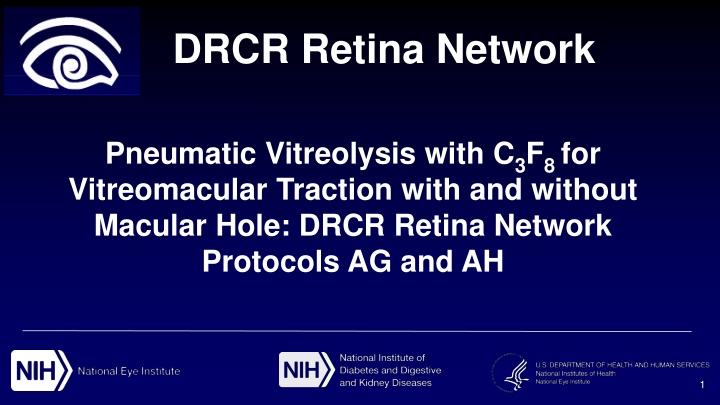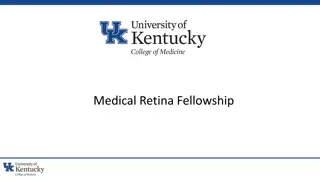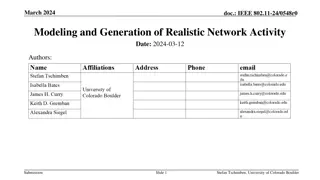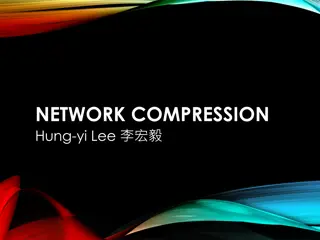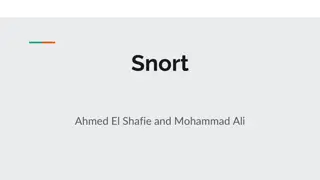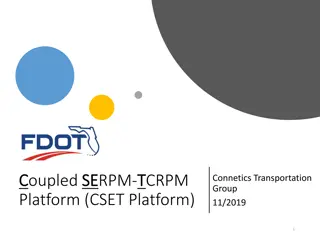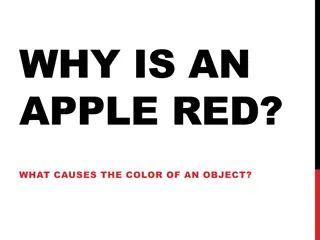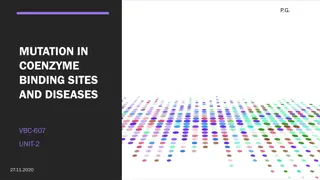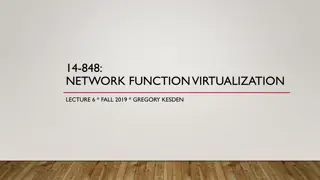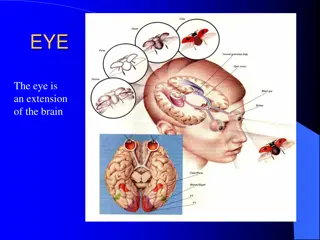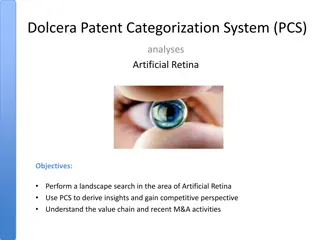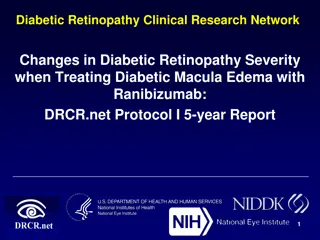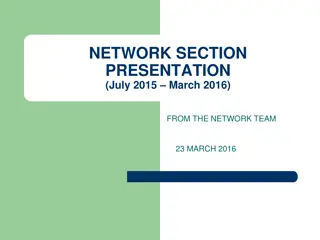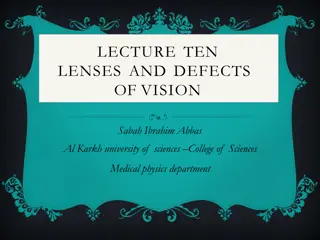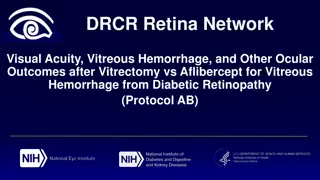DRCR Retina Network
Background on vitreomacular adhesion & traction, treatment options, and evaluation of Pneumatic Vitreolysis for symptomatic VMT with and without macular hole. Study protocols and potential benefits discussed.
Download Presentation

Please find below an Image/Link to download the presentation.
The content on the website is provided AS IS for your information and personal use only. It may not be sold, licensed, or shared on other websites without obtaining consent from the author.If you encounter any issues during the download, it is possible that the publisher has removed the file from their server.
You are allowed to download the files provided on this website for personal or commercial use, subject to the condition that they are used lawfully. All files are the property of their respective owners.
The content on the website is provided AS IS for your information and personal use only. It may not be sold, licensed, or shared on other websites without obtaining consent from the author.
E N D
Presentation Transcript
DRCR Retina Network Pneumatic Vitreolysis with C3F8 for Vitreomacular Traction with and without Macular Hole: DRCR Retina Network Protocols AG and AH 1
Background Vitreomacular adhesion (VMA) occurs when the posterior hyaloid remains attached to the surface of the retina at the macula. Vitreomacular traction (VMT) occurs when VMA results in tractional distortion of macular architecture. Symptoms include decreased central visual acuity or metamorphopsia. Progression of VMT can lead to a macular hole in which tractional forces create a full-thickness macular defect with vision loss, frequently requiring surgical intervention. 2
Treatment for Vitreomacular Traction Treatment options for VMT without macular hole: Observation 10 30% spontaneously resolve Vitrectomy May be recommended for severe cases but is costly and carries the risk of cataract progression, retinal detachment, and endophthalmitis Ocriplasmin 24 45% success, but used infrequently due to reports of sight-threatening complications and high cost 3
Treatment for Macular Hole Treatment options for macular hole: Vitrectomy First-line treatment for most full-thickness macular holes as closure rates approach 100%. Disadvantages: high cost, patient discomfort, and risk of cataract progression, retinal detachment, and endophthalmitis Ocriplasmin ~60% success for small holes, but used infrequently due to reports of sight-threatening complications and high cost 4
Pneumatic Vitreolysis (PVL) for VMT and Macular Hole In-office intraocular injection of an expansile gas (C3F8) A retrospective case series of 56 eyes found VMT release in 86% and macular hole closure in 60%.* Risks include retinal tear, retinal detachment, endophthalmitis, and cataract. No randomized clinical trials have evaluated PVL for VMT or macular hole. If safe and effective, PVL would be a less invasive, lower- cost alternative to vitrectomy 5 *Chan CK, Mein CE, Crosson JN. Pneumatic Vitreolysis for Management of Symptomatic Focal Vitreomacular Traction. J Ophthalmic Vis Res. 2017 Oct-Dec;12(4):419-423.
Study Objectives Evaluate the safety and efficacy of PVL for symptomatic VMT without macular hole (Protocol AG) and with macular hole (Protocol AH) 6
Protocol AG Randomized Clinical Trial Assessing the Effects of Pneumatic Vitreolysis on Vitreomacular Traction Without a Macular Hole 7
AG Study Design Multicenter Randomized Clinical Trial (Goal = 124 Eyes) At least 1 eye that meets each of the following criteria: Central vitreomacular adhesion on OCT 3,000 m Reading center confirmation required for eligibility Best-corrected ETDRS visual acuity equivalent of 20/32 to 20/400 Decreased visual function attributed to VMT No macular or lamellar hole Prompt vitrectomy not required Observation (Sham injection) PVL (Injection of C3F8 gas) Primary Outcome: Proportion of eyes with VMT release on OCT without rescue vitrectomy at 24 weeks 8
AG Study Treatment and Follow-up Enrollment Follow-up At Each Visit Best-corrected E-ETDRS VA Dilated eye exam following refraction OCT Visual function with myVisionTrack (12 and 24 weeks only) 0.3 mL injection C3F8 or sham injection Weeks 1, 4, 12, and 24 Criteria for vitrectomy: VA decreased from baseline by at least 10 letters or 5 letters at two consecutive visits (excl. 1 week) Condition required prompt surgical intervention Paracentesis was allowed but not required Indirect ophthalmoscopy or a vision check was used to assess for complications 9
AG Randomization and Retention N = 46 Eyes 37% of the recruitment goal of 124* Included in the Primary Analysis 24-Week Visit PVL N = 24 N = 23 (96%) 100% Sham N = 22 N = 22 (100%) 100% *Recruitment was terminated early due to safety concerns One participant was lost to follow-up Missing data imputed by multiple imputation 10
AG Participant Baseline Characteristics PVL N = 24 Sham N = 22 Age (y), mean 70 75 Female 63% 73% Type 2 Diabetes 33% 45% Race/Ethnicity White 67% 77% Hispanic or Latino 17% 23% Black/African American 13% 0% Unknown or not reported 4% 0% 11
AG Ocular Baseline Characteristics PVL N = 24 Sham N = 22 Visual acuity letter score, mean 68 69 Snellen equivalent, mean 20/50 20/40 79 to 69 letter score (20/32 20/40) 63% 73% 68 to 54 letter score (20/50 20/80) 25% 18% 53 to 39 letter score (20/100 20/160) 13% 9% Phakic (natural lens) 58% 41% 12
AG Ocular Baseline Characteristics PVL N = 24 Sham N = 22 Epiretinal membrane in CSF 8% 5% Width of vitreomacular attachment that extends within the CSF, median Loss of ellipsoid zone integrity in CSF Loss of ellipsoid zone integrity in foveal center 480 m 503 m 63% 36% 46% 36% CSF = central subfield 13
AG Central VMT Release and Rescue Treatment Through 24 Weeks PVL N = 23 Sham N = 22 Difference (95% CI)* P value* Central VMT release without rescue 66% 78% 9% < .001 (44% to 88%) 4% (-4% to 13%) Rescue vitrectomy 4% 0% .31 VMT = vitreomacular traction *Missing data were imputed Primary outcome Defined as vitrectomy before VMT release 14
Central VMT Release Without Rescue Treatment Through 24 Weeks AG Hazard Ratio: 19.1 95% CI = 4.6 78.3 P < .001 15
AG Visual Acuity Through 24 Weeks 16
AG Visual Acuity Change Through 24 Weeks PVL Sham Adjusted Mean Difference at 24 Weeks: -0.8 letters (95% CI, -6.1 to 4.5) P = .77 17
AG Visual Acuity Change at 24 Weeks 10-Letter Gain (Improvement) 10-Letter Loss (Worsening) 100% 100% 75% 75% % of Eyes % of Eyes 50% 50% 35% 32% 25% 25% 4% 0% 0% 0% PVL N = 23 Sham N = 22 PVL N = 23 Sham N = 22 P P 95% CI 95% CI Adjusted Difference Difference -10% -48% to 29% .63 4% -11% to 21% .53 18
AG Shape Discrimination Hyperacuity* 19 *Smaller values indicate better hyperacuity. 0.1 logMAR = 1 line on an eye chart = 5 letters.
AG Shape Discrimination Hyperacuity Change PVL Sham Adjusted Mean Difference at 24 Weeks: -0.09 logMAR (95% CI, -0.21 to 0.02) P = .12 20 *Smaller values indicate better hyperacuity. 0.1 logMAR = 1 line on an eye chart = 5 letters.
AG Ellipsoid Zone Integrity at 24 Weeks Adjusted Difference (95% CI) -52% (-91% to -13%) -22% (-50% to 5%) PVL N = 22* Sham N = 22 P Value Loss of ellipsoid zone integrity in CSF Loss of ellipsoid zone integrity in foveal center 27% 50% .009 18% 36% .10 *Missing for one eye at 24 weeks Adjusted for baseline ellipsoid zone integrity status
Protocol AH Single-Arm Study Assessing the Effects of Pneumatic Vitreolysis on Small Macular Holes 22
AH Rationale for Single-Arm Study Eyes with macular hole need treatment, therefore randomization to a sham arm would be inappropriate. Vitrectomy results in nearly 100% hole closure making it an unnecessary (and expensive) control group choice. Even if this proposed study finds that PVL is only moderately successful, physicians and patients may decide to attempt PVL in the office before proceeding with more costly, invasive surgery. Thus, even without a control group, the results from this study will provide valuable data for physicians and patients to make informed decisions about treatment course. 23
AH Study Design Objective: Obtain estimates for the proportion of eyes with macular hole closure for eyes with VMT and small full- thickness macular holes treated with PVL At least 1 eye that meets each of the following criteria: Full-thickness macular hole 250 m at the narrowest point, confirmed by central reading center Central vitreomacular adhesion on OCT 3,000 m, confirmed by central reading center Best corrected ETDRS visual acuity equivalent of 20/25 to 20/400 PVL (Injection of C3F8 gas) Primary Outcome: Proportion of eyes with macular hole closure of the inner retinal layers at 8 weeks without rescue treatment 24
AH Study Treatment and Follow-up Enrollment 0.3 mL injection C3F8 Follow-up Weeks 1, 4, 8, and 24 4-8 W, rescue vitrectomy could be performed (not required) if internal diameter of MH not improved >8W, rescue vitrectomy allowed at investigator discretion Paracentesis allowed but not required. Indirect ophthalmoscopy or vision check to assess for complications Participants instructed to position face down for 50% of the time for 4 days post injection At Each Visit Best-corrected E-ETDRS VA Dilated eye exam following refraction OCT 25
AH Enrollment and Retention N = 35* eyes 70% of the recruitment goal of 50 Included in the Primary Analyses 24-Week Visit 8-Week Visit N = 35 Received C3F8 as assigned N = 35 (100%) N = 34 (97%) 100% *Recruitment was terminated early due to safety concerns. Excludes one eye that did not have full-thickness macular hole, was enrolled, received C3F8 and completed the 24-week visit, but is not included in any analysis. One withdrew from the study. Missing data imputed using multiple imputation. 26
AH Participant Baseline Characteristics PVL N = 35 Age (y), mean 69 Female 69% Type 2 Diabetes 23% Race/Ethnicity White 77% Hispanic or Latino 14% Black/African American 9% 27
AH Ocular Baseline Characteristics PVL N = 35 Visual acuity letter score, mean 56 Snellen equivalent, mean 20/80 79 to 83 letter score (20/25) 6% 78 to 69 letter score (20/32 20/40) 6% 68 to 54 letter score (20/50 20/80) 57% 53 to 39 letter score (20/100 20/160) 17% 38 to 19 letter score (20/200 20/400) 14% Phakic (natural lens) 80% 28
AH Ocular Baseline Characteristics PVL N = 35 Epiretinal membrane in central subfield 3% Width of attachment extending within the central subfield, median Macular hole width at narrowest point, median Loss of ellipsoid zone integrity in central subfield and foveal center 325 m 79 m 100% 29
AH Macular Hole Closure and Rescue Treatment 8 Weeks PVL N = 35 95% CI Macular hole closure without rescue treatment * 29% 16% 45% Rescue vitrectomy 34% 21% 51% 30 *Primary outcome
AH Macular Hole Closure Without Rescue Treatment Through 24 Weeks 24-Week Cumulative Probability: 29% 95% CI: 17% 47% 31
AH VMT Release Without Rescue Treatment Through 24 Weeks 24-Week Cumulative Probability: 94% 95% CI: 83% 99% 32
AH Visual Acuity Through 24 Weeks 24-Week Mean VA: 66 letters 20/50 33
AH Visual Acuity Change Through 24 Weeks 24-Week Mean Change: 9.2 letters 95% CI: 4.3 to 14.4 34
AH Visual Acuity Change at 24 Weeks 10-Letter Loss (Worsening) 10-Letter Gain (Improvement) 100% 100% 95% CI: 37% 69% 95% CI: 3% 22% 75% 75% % of Eyes % of Eyes 53% 50% 50% 25% 25% 9% 0% 0% PVL N = 34 PVL N = 34 35
AH Exploratory Outcomes 24 Weeks PVL N = 34 95% CI Macular hole closure with outer retinal lucency without rescue Loss of ellipsoid zone integrity in central subfield Loss of ellipsoid zone integrity in foveal center 18% 8% 34% 74% 57% 85% 53% 37% 69% 36
Safety Results Protocols AG and AH 37
Retinal Detachments or Tears PVL 95% CI Retinal Detachment or Retinal Tear Overall (N = 59)* Retinal Detachment or Retinal Tear Protocol AG (N = 24)** Retinal Detachment or Retinal Tear Protocol AH (N = 35) 7 eyes (12%) 6% 23% 2 eyes (8%) 2% 26% 5 eyes (14%) 6% 29% *All were detachments except 1 in eye AH had tear without detachment. Number of eyes with rhegmatogenous retinal detachment was 6 of 59 (10%). **0 of 22 eyes in the Protocol AG Sham group developed tear or detachment. 38
Retinal Detachments and Tears After 62 participants enrolled in the two studies, the DSMC noted that the rate of retinal tear or detachment was above the estimate in the informed consent form (1%) Recruitment resumed following literature review and revising the rate in the informed consent form to 5 13% Additional retinal tears and detachments brought combined total from both studies to 7 of 59 eyes that received PVL (12% [95% CI: 6% 23%]) The DSMC recommended termination of recruitment 39
Additional Ocular Safety Outcomes Protocol AG Protocol AH Combined Event, No. (%) PVL (N = 24) Sham (N = 22) PVL (N = 35) PVL (N = 59) P-value 95% CI Endophthalmitis 0% 0% - 0% 0% 10% 0 Vitreous hemorrhage 4% (1) 0% .51 3% (1) 1% 15% 3% (2) Macular hole 4% (1) 5% (1) 1.00 - - -
Additional Ocular Safety Outcomes Protocol AG Protocol AH Combined Event, No. (%) PVL (N = 24) Sham (N = 22) PVL (N = 35) PVL (N = 59) P-value 95% CI Adverse intraocular pressure event* 8% (2) 9% (2) 1.00 20% (7) 10% 36% 15% (9) Traumatic cataract** 7% (1) [N = 14] 0% 0% - 0% 12% 2% (1) [N = 9] [N = 28] Cataract surgery** 7% (1) [N = 14] 0% 7% (2) [N = 28] .56 2% 23% 7% (3) [N = 9] *Defined as IOP 30 mmHg, increase 10 mmHg, glaucoma procedure, or new IOP-lowering medication **Limited to eyes that were phakic at baseline
Limitations Planned sample sizes were not met due to early termination, and the original sample size calculations were based on anatomic, not visual, outcomes Thus, power to detect modest differences between treatment groups (AG) and the precision of estimated rates (AH) were relatively low. Follow-up ended after 24 weeks, so data on long- term outcomes are unavailable. 42
Conclusions In most eyes with VMT, PVL induced hyaloid release. In eyes with macular hole, PVL resulted in hole closure in approximately one third of eyes. These studies were terminated early because of safety concerns related to retinal detachments and retinal tears. 43
DRCR Retina Network Thank you! 44
